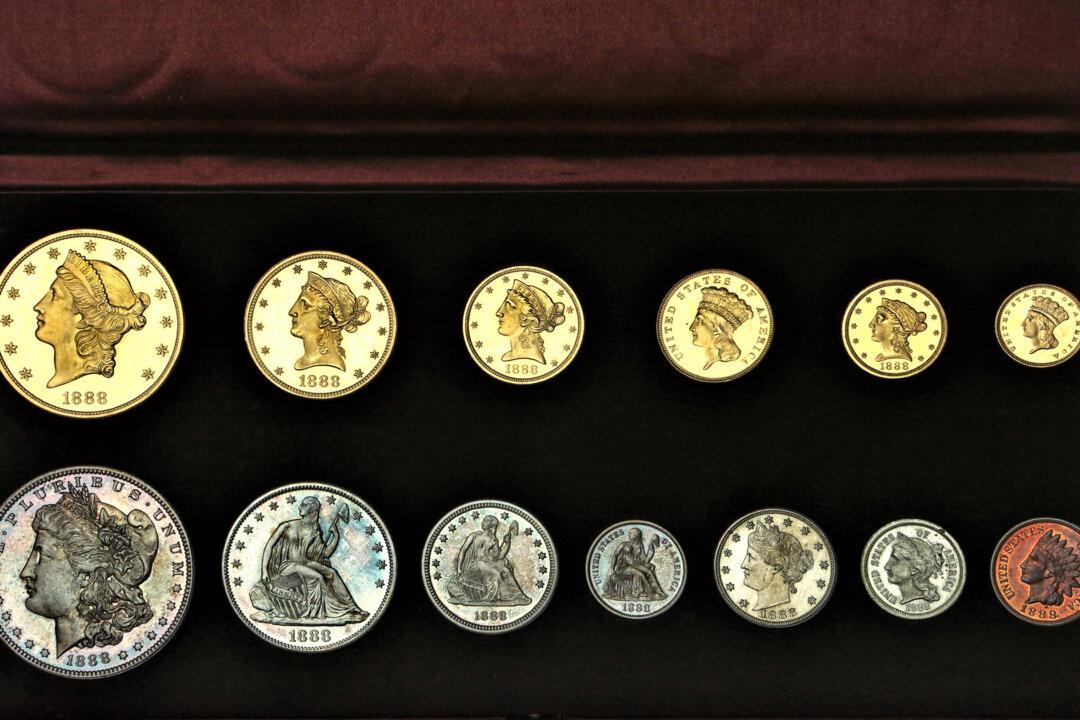Descendants of a noteworthy paper manufacturer unearthed his collection of rare 19th-century gold coins during a house clearance. The treasure was auctioned off in London, England, fetching over half a million dollars and rocking the coin-collecting world in the process.
The collection consisted of 13 gold coins in a custom box, a full United States proof set from the U.S. Mint, dated 1888, once belonging to John Robert Fletcher, a third-generation award-winning tissue paper manufacturer from Stoneclough, Manchester.





